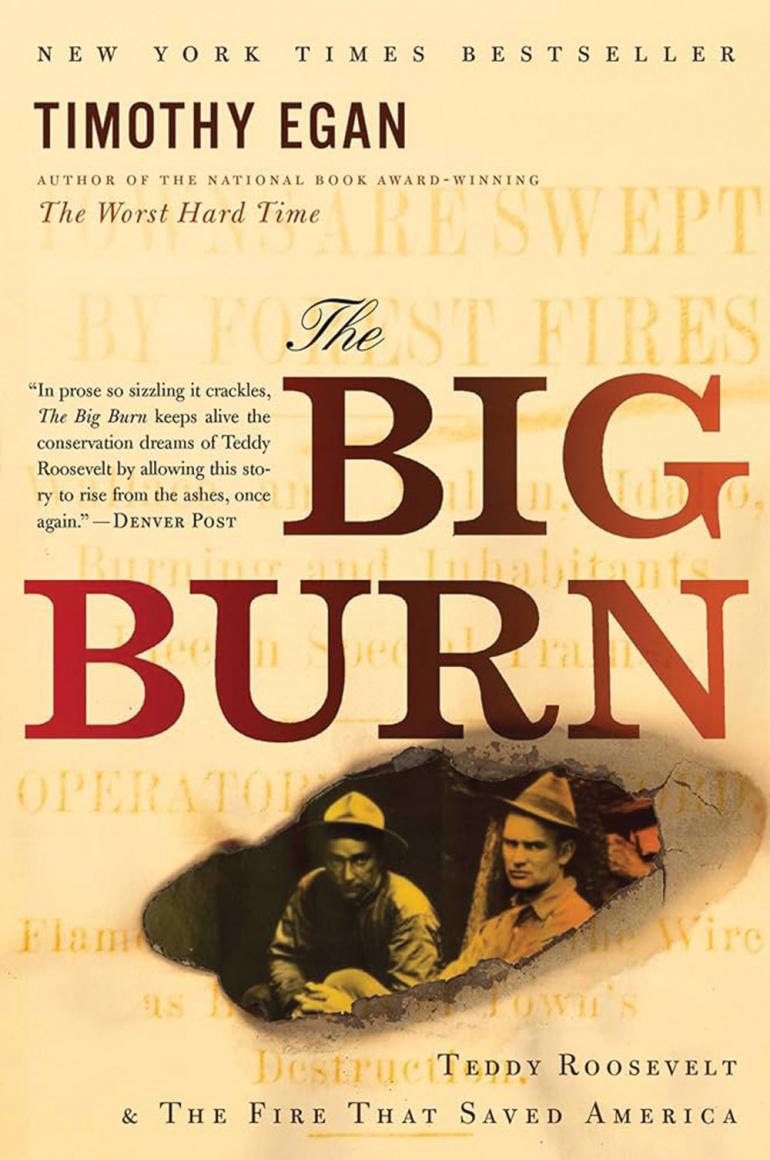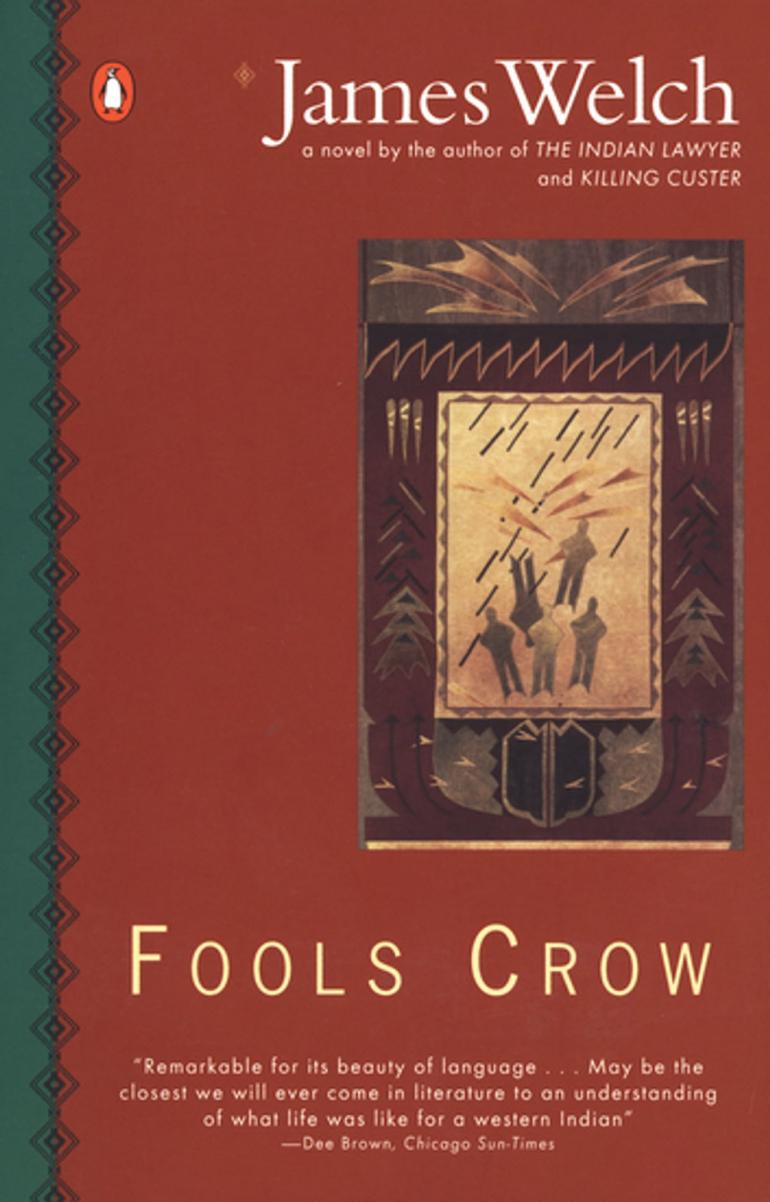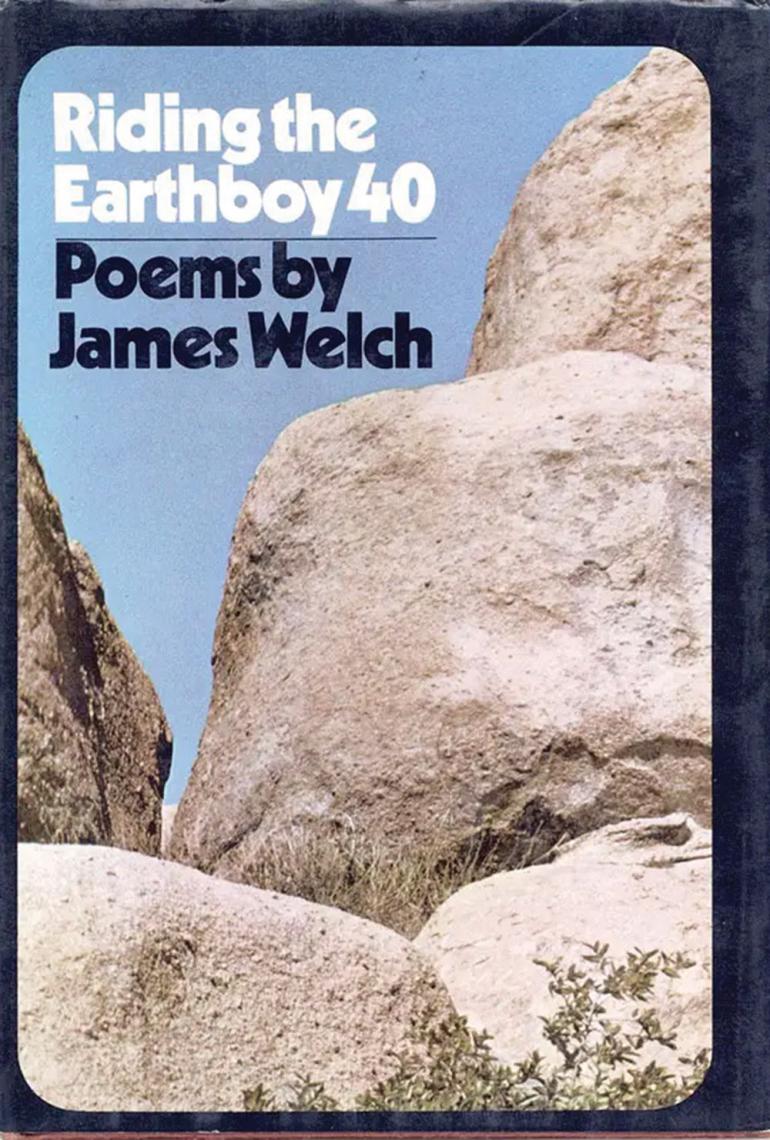Words of the West
A sampling of Montana’s best outdoor literature.
In a world of mind-numbing devices and diminishing attention spans, books act as a lifeboat for our mental vigor and wellbeing. Books: those colorful, screen-less rectangles packed with pages of knowledge, wisdom, and entertainment. Long-form stories of hardship, history, and how we got to where we are today—remember those? Many have been written about our home state. Enough to make a pile, start reading tomorrow, and never stop. While the sheer volume of Montana literature may be impossible to get through, there are some titles that unquestionably deserve a spot on every Montanan’s list. Works that draw connection to place and time; books that have shaped the course of the West. These merit a read, no doubt.
And what better time to sink into a good one than winter? Short and frigid days beckon Bozemanites to strike a fire and curl up on the couch. Take advantage of the invitation. Pick up one of these books from a local bookstore, rent it from the library, or borrow from a friend. If you have one collecting dust on your shelf at home, pass it along to someone who will get something from it. This is Montana’s essential reading. How many can you check off the list?
Editor’s note: Our list is not comprehensive, but it’s a good starting point if you’re unfamiliar with Montana literature (or even if you are). Make your own stack of books that help you better understand and appreciate this state and its past, and your own place within it.
Nonfiction
Fire and Brimstone
Author: Michael Punke
Year: 2006
In my opinion, this is hands-down the best book written about Butte and one of the best about Montana. Before Punke’s sleeper novel, The Revenant, was committed to celluloid, he turned his attention to Butte and the biggest hard-rock mining disaster in American history. He properly places the event into a larger context of regional and national politics, immigration (a “No Smoking” sign in the Speculator Mine was translated into 16 languages), industrial capitalism, war, and just plain-old humanity. The epilogue, “Normal for Its Time,” contains possibly the most cinematic paragraph yet to be filmed. —Paul Driscoll
Montana High, Wide, and Handsome
Author: Joseph Kinsey Howard
Year: 1944
A classic of novel of responsible use of the land, its resources, and its people. Written nearly eighty years ago, and roughly forty-five years after Montana’s state hood, Howard details in many stories the exploitation of our great country. Despite the decades of pillaging experienced by his forebearers, Howard is resolute in the end, that if given the chance, the people of Montana can overcome adversity. Today, as I read his work, I see the success of his predictions, but we face new challenges concerning the exploitation of our cherished land. In his words of our not-so-distant past, I draw strength in the knowledge that our new generation, filled with resolve and ingenuity, can also overcome. Give this book a go, keep an open mind, and steel your own resolve. —Aaron Farmer
Six Hundred Generations
Author: Carl M. Davis
Year: 2019
Ever wonder what Montana was like a thousand years ago? How about 15,000 years ago? In Six Hundred Generations: An Archaeological History of Montana, Carl Davis breaks down the gaps with case studies of 12 archaeologically significant sites across the state. From the Clovis people who hunted mammoths in the Shields Valley to the intricacies of flintknapping (chiseling rocks into arrowheads), the book is a crash-course in both prehistoric and contemporary Montana history. It’s painstakingly researched and well-written for a general audience. —Eli Fournier
The Big Burn
Author: Timothy Egan
Year: 2009
At the turn of the nineteenth century, man was charging west, turning forests into board feet as fast as mills could process the timber. But in 1910, when western wildfires scorched over three million acres across Montana, Idaho, Washington, and Canada, people started to see that natural resources were in fact limited. Timothy Egan’s The Big Burn tells the origin story of the modern-day conservation movement. He covers key players like Teddy Roosevelt and Gifford Pinchot, the founding of the US Forest Service, as well as the deadly day of August 20th, 1910. Anyone who lives in the West and recreates on public land should read this book. —Corey Hockett
Undaunted Courage
Author: Stephen Ambrose
Year: 1997
Lewis and Clark covered many miles and had some of their most challenging adventures in what is now Montana. While Undaunted Courage is intended to be a biography of Lewis, Ambrose relies heavily on the journals of other expedition members. He covers many aspects of the wildlife, landscape, people, and cultures they encountered. Considering that the Montana portion is the least-changed of the entire expedition route, this is a wonderful introduction to what was once, and to some extent is still, present. Use it as an inspiration to further exploration of the journals themselves, the Montana landscape, and understanding of the wildlife and people the expedition encountered. —Ken Sinay
Young Men and Fire
Author: Norman Maclean
Year: 1992
On August 5, 1949, the Mann Gulch Fire killed 13 wildland firefighters in what is now Gates of the Mountains Wilderness outside Helena. In journalistic fashion, Norman Maclean—renowned author of A River Runs Through It—walks us through the devastating event, recounting the blow-up and analyzing the decisions made that day. Chock-full of research and interviews, the book is part detective work, part novel. The tragedy of Mann Gulch—and Maclean’s re-telling of it—led to an immense evolution in wildland firefighting. Young Men and Fire is revered as one of the top fire books of all time. —Corey Hockett
Fiction
Legends of the Fall
Author: Jim Harrison
Year: 1979
Originally written as a collection of screenplays, Legends of the Fall contains three novellas that will cut through a man’s callous exterior and straight to his heart. Author Jim Harrison spent much of his life in Montana, where a majority of the title novella (which was, in fact, adapted into a celebrated film) is set. But vast western landscapes are merely a backdrop—what really sets Harrison’s writing apart is the emotional development of his characters. Advancements come in quips rather than waves, calling for pause and utterance to oneself, “I felt that.” The image of distant mountains rising across a windswept plain and a sudden assailment by longing, sorrow, vengeance, or pride will enliven even the most imperturbable reader to beckon for salvation from within. —Jack Taylor
A River Runs Through It
Author: Norman Maclean
Year: 1976
Perhaps one of Montana’s most idyllic reads. In this autobiographical novella, Norman Maclean tells a coming-of-age tale about his life in small-town Missoula in the 1930s through a lens of brotherhood and fly fishing. With its pastoral prose, the story paints the American West as being the quintessential romantic way of life—so much so that hordes of people have flocked here to chase it. While its movie is often credited with “ruining Montana,” it is indeed worth sitting down to read the work that made our beloved state so popular. —Corey Hockett
Fools Crow
Author: James Welch
Year: 1986
This coming-of-age novel tells the story of a young Blackfeet Indian, Fools Crow, finding his way in life. Growing up on the leading edge of white settlement in what is now Montana, the protagonist is forced to either fight or assimilate—but the end result is inevitable. While reading the book, remember that author James Welch grew up in the Blackfeet culture, and this historical-fiction novel is a culmination of stories and legends he was steeped in for decades. At the time of writing, it was a glimpse into the otherwise-overlooked Native American perspective on appropriation and war, and still today offers insight into the culture beyond anything a museum or battle-site memorial could teach. —Eli Fournier
The Big Sky
Author: A.B. Guthrie
Year: 1947
There’s no shortage of good mountain-man novels, but the cream of the crop in fiction is always that which tells an honest tale, despite its inventions—and by this measure, A.B. Guthrie’s The Big Sky, which precedes the Montana author’s better-known and Pulitzer-winning The Way West, is beyond compare. A young man flees trouble in Kentucky, takes up with another malcontent, and heads West, where a life of hardship, danger, romance, friendship, and fulfillment awaits. Rife with interesting characters, outrageous escapades, and tear-inducing tragedy, The Big Sky paints a poignant picture of 19th-century Montana, and ranks among the best works of literature ever to emerge from our great state. —Mike England
Colter’s Run
Author: Stephen Gough
Year: 2008
Tales of harrowing adventure never fail to inspire, especially when they’re real stories of real people. And when the setting is one’s home ground—well, now you’ve really got a must-read. So it is with this historical-fiction account of John Colter’s famous flight from the Blackfeet, which took place at the headwaters of the Missouri River near modern-day Three Forks. Embellished or not, this is a story for the ages—one of cunning, courage, and survival—and an indelible piece of Montana lore. Stephen Gough’s story is engaging and thorough, relating not only the iconic event, but also the intriguing character and impressive qualities of the man himself. —Mike England
A Sewer Runs Through It
Author: Juan Mayor
Year: 2023
Most Bozemanites are aware of the Yellowstone Club and its notorious co-founder, Tim Blixseth, but few know the full story of how the timber-baron-turned-real-estate-mogul created one of the most exclusive social clubs in the world. The tale is one of childhood trauma, teenage flagellation, and The Wolf of Wall Street–style ambition. This book takes readers from the depths of the Big Sky sewers into the algae-filled waters of the Gallatin River, in a jaw-dropping reckoning with human greed, pathetic overcompensation, and one developer’s infinite appetite for destruction. If there’s one contemporary book to read, this is it. —Joe King
Guidebooks
Bozeman Rock Climbs – 3rd Edition
Authors: Bill Dockins & Tom Kalakay
Year: 2009
Truly “Bozeman Area,” this guidebook merely spans from Big Sky to the Bridgers, but packs hundreds of route descriptions into its pages—not to mention primers on climbing history, geology, and the character of local rock. The route descriptions are terse, leaving much to be discovered upon ascent. This style echoes the sentiment of old-time Bozeman climbers, many of whom were entirely opposed to documentation whatsoever. But Dockins and Kalakay threaded the needle with Bozeman Rock Climbs, offering just enough information to point its reader in the right direction, and it’s since become our region’s most popular climbing guidebook. —Jack Taylor
Day Hikes around Bozeman, Montana
Author: Robert Stone
Year: 2011
Perhaps the most iconic of Bozeman’s guidebooks, Robert Stone’s Day Hikes around Bozeman, Montana is renowned for its thoroughness, accuracy, and primitive but very helpful maps. It covers all of the most popular hikes within about an hour of Bozeman, of which there are 110 in total. With so many places to check out, these hikes are sure to offer some solitude despite their notoriety. The book doesn’t have any pictures, so you’ll need to get out there for the full experience! Geographical information is abundant, but the volume stays true to its designation: this is a guidebook without superfluous material. —Jack Taylor
Flora of Montana’s Gallatin Region
Author: Whitney Tilt
Year: 2011
A good flora or fauna guidebook is essentially a dichotomous key with colors and shapes in place of dry, boring text. Detailed enough for positive identification, but not too messy that the amateur ecologist gets tangled up in the descriptions. Is that the auricle or the midrib? And are the pedals reniform or orbicular? Fortunately, Tilt’s guidebook is logically organized, easy to use, and full of colorful photographs. And given its tight geographical constraints, you’ll be able to focus on the plant life in your own Montana back yard, undistracted by the hundreds of species that exist elsewhere. —Eli Fournier
Select Peaks of Greater Yellowstone
Author: Thomas Turiano
Year: 2003
Everyone loves a good guidebook, especially those new to an area. But even folks who have lived in and explored around Bozeman their whole lives would learn a thing or two in Thomas Turiano’s Select Peaks of Greater Yellowstone. This 500-page coffee-table piece provides detailed profiles of 13 mountain ranges. While catered slightly to the mountaineer, Select Peaks dives deep into history, geology, and the vast interconnectedness of the larger ecosystem. A second edition is being published this fall. Read “Peak Mentality” for an interview with Turiano. —Corey Hockett
Southern Montana Singletrack
Authors: Will Robertson & Tim Hawke
Year: 2019
As Will Robertson says, “Walking is better than bleeding.” He’s referring to walking one’s bike along a treacherous trail instead of trying to ride it, and that’s exactly the attitude you want from an author of trail descriptions: realistic, down to earth, and slightly sarcastic. Robertson and co-author Tim Hawke have a wealth of knowledge, and it shows in their authoritative guidebook complete with maps, elevation profiles, and potential shuttle options. Their guidebook has riders of all abilities on the edge of their saddles for summer, dreaming of biking, er... walking, alpine ridges deep in the Montana backcountry. —Eli Fournier
Winter Dance
Author: Joe Josephson
Year: 2004
Bozeman has fostered one of the nation’s most prolific winter-climbing scenes for over half a century. The Yellowstone region has more ice climbing than anywhere else in the Lower 48, and the pages of Joe Josephson’s Winter Dance document all the glory. Spanning from Big Sky to Cody, this book’s range of coverage will keep even the most zealous climber busy for years on end. The historic photos are inspiring—at times a bit unnerving—and the route descriptions are concise, leaving room for each climber’s own adventure. Whether you’re searching for climbs or just looking in awe of what’s been done, a turn through Winter Dance will have you on the edge of your seat. —Jack Taylor
Memoir
Grizzly Years
Author: Doug Peacock
Year: 1990
Unless you’re familiar with Doug Peacock, his contributions to the welfare of grizzly bears may be surprising. This conservationist, Vietnam vet, and renegade figure lives a Montana wilderness experience in the 1960s through ’80s that couldn’t quite be had today. We’re fortunate he recorded his post-war healing process and the resulting study of grizzlies—accidental though the combination was. Sometimes hilarious, sometimes heartbreaking, always authentic, Peacock’s second book gives a picture of what it used to be like out there in our back yard—with a subtle undertext of how you might want to behave, or not behave, in grizzly country. —Katie Thomas
This House of Sky
Author: Ivan Doig
Year: 1978
Ivan Doig takes us through 30 years of a family making a living as sheepherders in and around White Sulphur Springs. Beginning in the 1940s, This House of Sky tells of Doig’s childhood, going to school, and working on the ranch with his father, mother, and grandma. As the family struggles to make ends meet, they deal with loss, grief, and the real demand to keep going. Equally devoted to describing Montana’s landscapes as it is to his unique relationships with family and neighbors, Doig’s memoir is a vivid painting, portraying what it was like to grow up as a rural Montanan 80 years ago. —Corey Hockett
Tough Trip Through Paradise
Author: Andrew Garcia
Year: 1967
Like people, places can be complex, and it’s hard to truly understand either without knowing their history. One of Montana’s most fascinating backstories involves mountain-man Andrew Garcia’s exploits in the late 1800s, when the territory was a diverse and violent web of settlers, miners, townsfolk, soldiers, and free-roaming Native tribes. Garcia immigrated from Mexico and worked at Fort Ellis before setting off on an ill-fated trapping expedition to the Musselshell River, which ultimately led to his marriage to a Nez Perce woman and a pilgrimage to the Battle of the Big Hole, where her family was killed. Garcia was an unreliable narrator, and his editor a hopeless romantic, so Tough Trip Through Paradise is part fact, part fiction, and pure love story. Between it all, though, are honest and invaluable glimpses into a land and way of life that now exist only as fossils, etched into the stratified bedrock of time. —Mike England
Poetry
Making Certain It Goes On
Author: Richard Hugo
Year: 1984
This poetry anthology is a collection of eight previously published books by Richard Hugo, spanning 1961 to 1980, plus a handful of poems never before seen in print. Published posthumously, per Hugo’s request, you can trace his progression as a poet, and as a person. He covers both the mundane (such as a humorous accounting of how Deer Lodge chose a prison over a university, for fear of corrupting the town’s youth) and the serious—dreams, ambitions, love, and heartbreak. And, in true Montana fashion, he’s written a classic opening poem about trout fishing. —Eli Fournier
Riding the Earthboy 40
Author: James Welch
Year: 1971
James Welch clearly ranks among Montana’s most respected novelists, but before Fools Crow, he wrote poetry, publishing in literary magazines of the 1960s. A limited (and expensive) edition of collected poems was published in 1971: Riding the Earthboy 40. Its release went mostly unnoticed until Welch’s subsequent readings developed a wide and loyal following, and deservedly so. His poems are richly mystical—full of irony, humor, isolation, and plenty of north-central Montana wind. In his writing career, Welch would not again publish poetry, but how do you follow up “Earthboy... farmed the sky with words”? —Paul Driscoll
Wolf Tracks on the Welcome Mat
Author: Paul Zarzyski
Year: 2003
Paul Zarzyski’s collection of poetry is a brutally honest account of life in Montana. The poems cover the full gamut of human emotions, from the melancholy depths of losing five friends (and almost his wife) in one year, to the more comical moments of everyday life. Zarzyski’s book is a captivating read, even for those who wouldn’t ordinarily sit down with a poetry book, start to finish. But so long as you hunt, fish, or are cognizant of life in rural Montana, you’ll find something to appreciate. —Eli Fournier




































